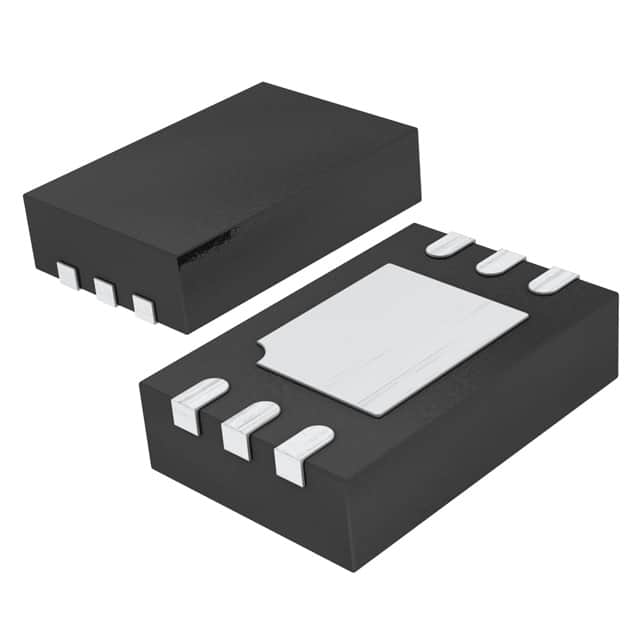Viz Specifikace pro podrobnosti o produktu.

LTC6993CDCB-2#TRMPBF
Product Overview
Category
The LTC6993CDCB-2#TRMPBF belongs to the category of integrated circuits (ICs).
Use
This product is commonly used in electronic devices for timing and frequency control applications.
Characteristics
- The LTC6993CDCB-2#TRMPBF is a versatile timer and oscillator with programmable frequency and duty cycle.
- It operates over a wide supply voltage range, making it suitable for various applications.
- This IC offers high accuracy and stability in timing and frequency control.
Package
The LTC6993CDCB-2#TRMPBF comes in a small form factor package, which is designed to be surface-mounted on printed circuit boards (PCBs).
Essence
The essence of this product lies in its ability to provide precise timing and frequency control in electronic devices.
Packaging/Quantity
The LTC6993CDCB-2#TRMPBF is typically packaged in reels or tubes, containing a specific quantity of ICs per package. The exact quantity may vary depending on the supplier.
Specifications
- Supply Voltage Range: 2.25V to 5.5V
- Frequency Range: 1kHz to 10MHz
- Duty Cycle Range: 0% to 100%
- Operating Temperature Range: -40°C to 125°C
- Package Type: 6-Lead DFN
Detailed Pin Configuration
The LTC6993CDCB-2#TRMPBF has the following pin configuration:
- GND (Ground)
- VCC (Supply Voltage)
- SET (Frequency and Duty Cycle Setting)
- OUT (Output)
- CTRL (Control Input)
- FLT (Fault Output)
Functional Features
- Programmable frequency and duty cycle allow for flexible timing control.
- Wide supply voltage range enables compatibility with various power sources.
- Fault output provides diagnostic information for system monitoring.
- Low power consumption ensures energy efficiency in battery-powered applications.
Advantages and Disadvantages
Advantages
- High accuracy and stability in timing and frequency control.
- Versatile programmability for different application requirements.
- Small form factor package allows for space-saving PCB designs.
- Wide operating temperature range ensures reliability in harsh environments.
Disadvantages
- Limited frequency range compared to specialized oscillators.
- Requires external components for precise frequency and duty cycle settings.
Working Principles
The LTC6993CDCB-2#TRMPBF operates based on an internal oscillator circuit that generates a clock signal. This clock signal is then divided and shaped to produce the desired frequency and duty cycle. The SET pin allows users to program the desired timing parameters, while the CTRL pin provides additional control options. The resulting output signal can be used as a timing reference or clock source in electronic systems.
Detailed Application Field Plans
The LTC6993CDCB-2#TRMPBF finds applications in various fields, including:
- Industrial Automation: Timing control in manufacturing processes, motor control, and synchronization of equipment.
- Communications: Clock generation for data transmission, synchronization in network devices, and timing in wireless communication systems.
- Consumer Electronics: Timing control in audio/video devices, gaming consoles, and home automation systems.
- Automotive: Timing and frequency control in engine management systems, infotainment systems, and advanced driver-assistance systems (ADAS).
- Medical Devices: Precise timing control in medical imaging equipment, patient monitoring devices, and laboratory instruments.
Detailed and Complete Alternative Models
- LTC6992CDCB-2#TRMPBF: Similar to LTC6993CDCB-2#TRMPBF but with additional features for pulse width modulation (PWM) applications.
- LTC6994CDCB-2#TRMPBF: Offers extended frequency range and higher accuracy for demanding timing applications.
- LTC6995CDCB-2#TRMPBF: Provides multiple independent timing channels in a single IC, suitable for complex timing control systems.
These alternative models offer similar functionality to the LTC6993CDCB-2#TRMPBF but with specific enhancements or variations to meet different application requirements.
Word count: 526 words
Seznam 10 běžných otázek a odpovědí souvisejících s aplikací LTC6993CDCB-2#TRMPBF v technických řešeních
Sure! Here are 10 common questions and answers related to the application of LTC6993CDCB-2#TRMPBF:
Q: What is the LTC6993CDCB-2#TRMPBF? A: The LTC6993CDCB-2#TRMPBF is a programmable oscillator with two frequency outputs, designed for use in technical solutions.
Q: What is the operating voltage range of LTC6993CDCB-2#TRMPBF? A: The operating voltage range of LTC6993CDCB-2#TRMPBF is typically between 2.25V and 5.5V.
Q: How can I program the frequency output of LTC6993CDCB-2#TRMPBF? A: The frequency output of LTC6993CDCB-2#TRMPBF can be programmed using an external resistor and capacitor.
Q: What is the frequency range of LTC6993CDCB-2#TRMPBF? A: The frequency range of LTC6993CDCB-2#TRMPBF is typically between 1Hz and 100kHz.
Q: Can I synchronize multiple LTC6993CDCB-2#TRMPBF devices together? A: Yes, multiple LTC6993CDCB-2#TRMPBF devices can be synchronized by connecting their SYNC pins together.
Q: Does LTC6993CDCB-2#TRMPBF have any built-in frequency modulation capabilities? A: No, LTC6993CDCB-2#TRMPBF does not have built-in frequency modulation capabilities.
Q: What is the typical power consumption of LTC6993CDCB-2#TRMPBF? A: The typical power consumption of LTC6993CDCB-2#TRMPBF is around 1.5mW.
Q: Can I use LTC6993CDCB-2#TRMPBF in battery-powered applications? A: Yes, LTC6993CDCB-2#TRMPBF can be used in battery-powered applications due to its low power consumption.
Q: Is LTC6993CDCB-2#TRMPBF suitable for high-temperature environments? A: Yes, LTC6993CDCB-2#TRMPBF is designed to operate in a wide temperature range, making it suitable for high-temperature environments.
Q: What are some common applications of LTC6993CDCB-2#TRMPBF? A: LTC6993CDCB-2#TRMPBF is commonly used in applications such as precision timing, frequency generation, clock synchronization, and signal processing.
Please note that the answers provided here are general and may vary depending on specific application requirements. It is always recommended to refer to the datasheet and consult with the manufacturer for detailed information.

